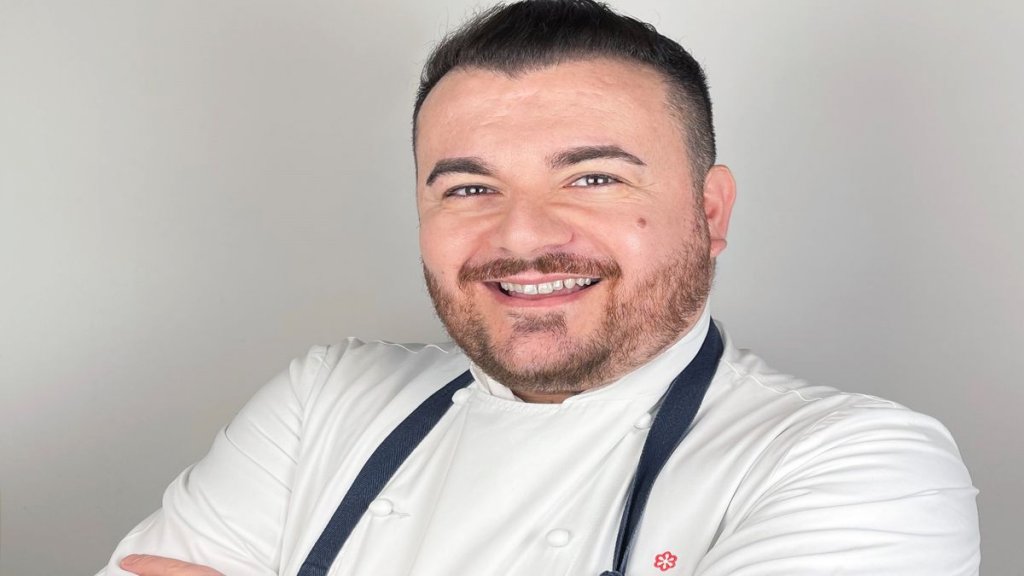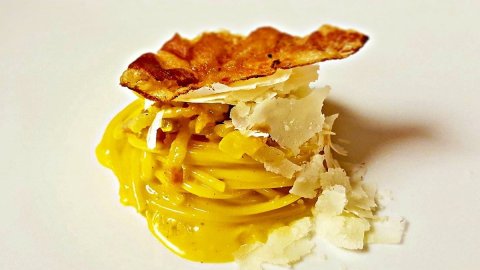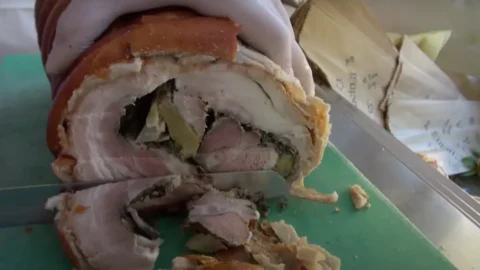It is a dish that does not boast a long history, it only dates back to the Second World War. They just make it up five ingredients: pasta, bacon, pecorino cheese, eggs and pepper, but just naming it creates gastronomic delirium. According to the most accredited version it dates back to the American soldiers who arrived in Italy who combined the ingredients familiar to them, the "Ration K" composed of eggs, bacon and gli spaghetti (discovered in Italy), preparing to eat. Their idea was liked by some Italian chefs, especially Romans, who perfected it until it became an iconic dish of Italian cuisine like many other dishes that have made the history of Italian gastronomy in the world.
This to put it briefly. Actually the signature of this extraordinary dish would be yes Renato Gualandi, a young Bolognese chef who in 1944 at the meeting between the US Fifth Army and the British Eighth Army held in Riccionand, he would have unknowingly created a precursor dish of the carbonara which, having become the cook of the allied troops in Rome from September 1944 to April 1945, he proposed it in the capital. And he was immediately imitated by everyone.
Be that as it may, Carbonara is celebrated today with a international day, Carbonara Day, an anniversary that now involves millions of people on all continents. Cooks, food lovers and enthusiasts meet on social media with hashtags #CarbonaraDay and #MyCarbonara, created by the pasta makers of Unione Italiana Food and IPO – International Pasta Organization to discuss tradition and innovation.
According to another hypothesis, the dish was "invented" by the charcoal burners (carbonari in Roman dialect) in the L'Aquila area, who prepared it using ingredients that were easy to find and preserve. In fact, to make the charcoal it was necessary to supervise the charcoal pit for a long time and therefore it was important to have the necessary supplies with you. It would therefore be the evolution of the dish called cacio e ova (Cace and Ove, in the Abruzzo dialect). Pepper was used in large quantities to preserve the bacon, fat or lard in place of oil, which was too expensive for charcoal burners.
A final hypothesis would lead the origin of the recipe back tothe Neapolitan cuisineto. This thesis identifies a possible origin of the dish in some recipes present in the 1837 treatise Cucina theoretical-practical by Ippolito Cavalcanti. In popular Neapolitan cooking it was the norm, in the preparation of some dishes, to use ingredients found in carbonara: a mixture of eggs, cheese and pepper added after cooking.
Beyond the various theories, however, it should be noted that the greatest Italian and international chefs have practiced on this dish loved by millions of people who are still divided on the use of pancetta or bacon.
Foodfirstonline proposes the recipe of Andrea Larossa, one Michelin star chef of the restaurant that bears his name in Alba (CN). A Chef – recites the Michelin – who draws his own path by playing with the Piedmontese tradition. In some dishes she quotes it with respect, in others she moves away from it in search of more creative ideas ”. The judgment is that "the presentations are captivating and the pleasure of the palate is not long in coming".
Though he was born 41 years ago in Verbania on Lake Maggiore, Larossa grows up with a culinary culture linked to the mother's Lazio origins and Lucan of the father, therefore made of genuine ingredients, strong flavors and the culture of good food and the joy of being at the table.
The passion is unleashed when, finding himself in the kitchen of a kitchen serving as a draft, he understands that the pleasure of eating is being added to the pleasure of being able to prepare it for others and this takes over until he pushes him to enter his first real kitchen and own that faces for a year as "learn a trade".
And among the various experiences that he counts in his career as a Chef, one that marks him in particular is the accomplished one alongside Carlo Cracco. It is there that he completes his training, later enriched by a passage to the Locanda del Pilone where he defines the knowledge and techniques of the Langhe tradition combined with Japanese culture by Chef Kondo.
Alba with its great tradition and the richness of its territory is the ideal choice to open its restaurant together with its countryside life, Patrizia, at the helm of the room and the wine list.
And here is his recipe, which does not betray tradition but with a few tricks ennobles a dish of the poor tradition with solutions that make it refined and elegant while being aware of its full flavour. With a recommendation: “The main thing – suggests Andrea Larossa – is the use of quality and fresh products. It is important not to mix the pasta on the fire, otherwise you will make a pasta omelette and not a carbonara. Also remember to save a little of the pasta cooking water for the final creaming"

MY CARBONARA RECIPE
INGREDIENTS FOR 4 PEOPLE:
400 g spaghetti
7 egg yolks
130 g bacon
100g pecorino
ground black pepper
METHOD:
Cut the bacon into matchsticks and sweat it in a pan to extract the fat, draining the fat from time to time into a separate bowl. When the guanciale is well browned, place it on absorbent paper.
Bring the water to the boil in a tall saucepan, add salt and add the spaghettone. Open the eggs and separate the yolks from the white, place the yolks in a tall glass and blend them with an immersion blender, adding the pecorino cheese, the bacon fat, the pepper and a little cooking water.
When the pasta is completely cooked, drain it reserving a glass of the cooking water. Put the spaghettoni in the pan with the bacon, add the egg cream and the bacon, stir in a little cooking water.
Serve in a bowl, finishing the dish with a good grating of pepper and pecorino.
Larossa Restaurant – Via Giacomo Alberione, 10/D – 12051 Alba (CN)





